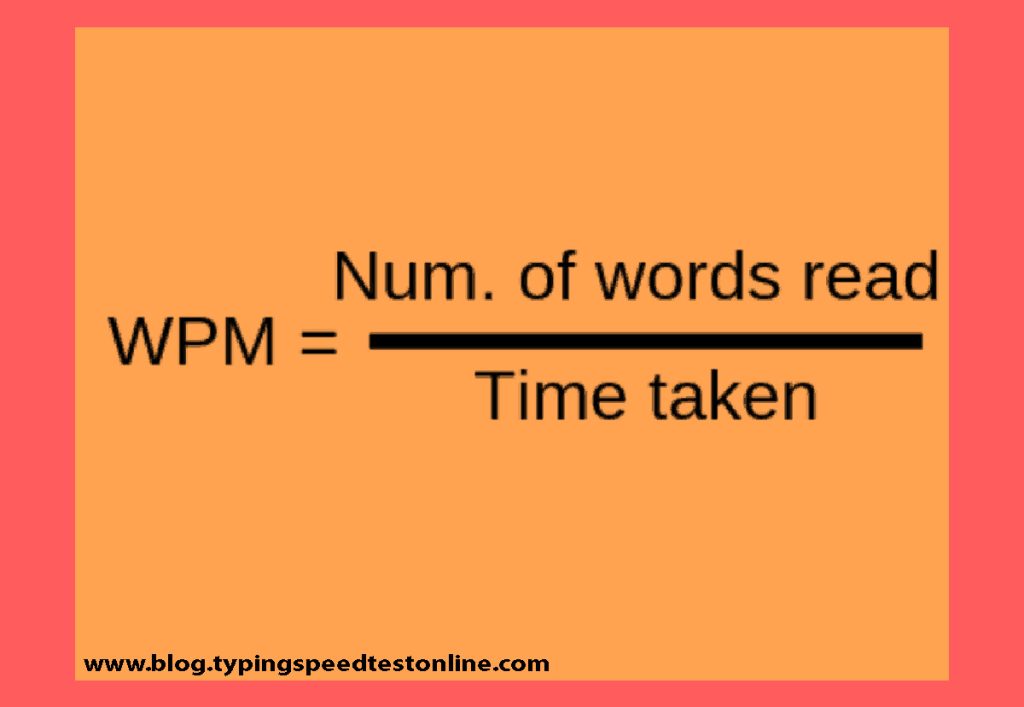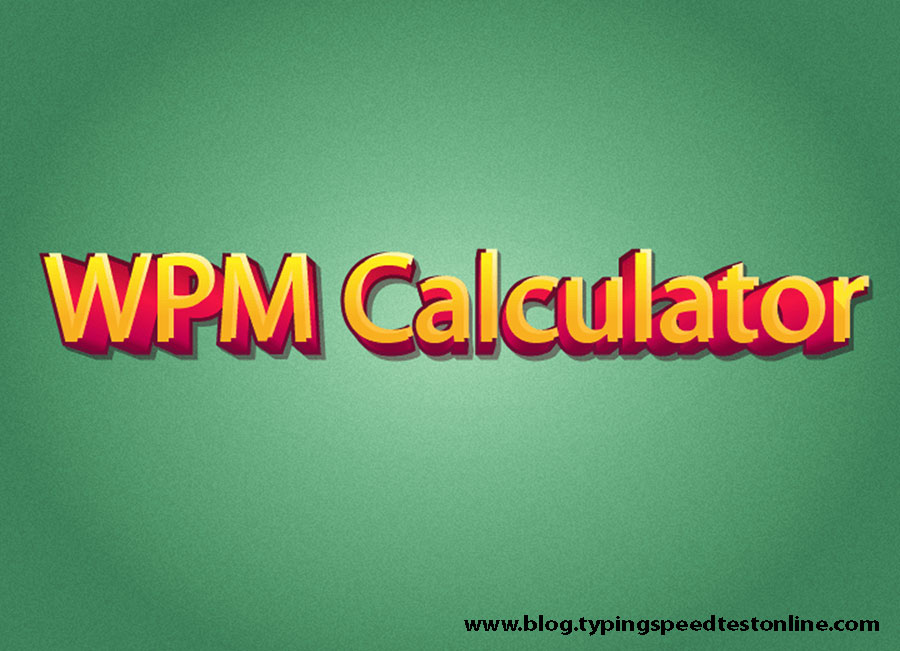Calculating WPM Typing:- Inquisitive how productive of a communicator you are? Words Per Minute (WPM for short) is an estimation that characterizes how rapidly you can frame and perceive words in your correspondence with others. Whether you hope to sort out how you type, talk, and read, a recipe for finding your WPM is similar.
Contents
Finding Words Typed Per Minute: Calculating WPM Typing
i. For the fastest outcomes, utilize a web-based typing analyzer. Today, the most straightforward method for sorting out the number of words you that can type Per Minute is typically to utilize a program online explicitly made to test this. It’s not difficult to track down many of these projects with a web index term like “words Per Minute typing test.” However there are many of these sorts of projects accessible, most work the same way: you type a rundown of words inside a specific time limit and the program utilizes your presentation to compute your WPM.
- One extraordinary program for this is accessible at 10fastfingers.com. The test on this page is basic: simply type a word on screens, putting space, until the moment’s clock counts.
- As well as learning your WPM, this typing test will likewise let you know the number of errors you made and let you know what level of test-takers you scored in.
ii. On the other hand, open a word processor and set a clock. You can likewise decide your composed WPM physically — for this, you’ll require a PC program you can type in (like a word processor or notebook program) a clock or stopwatch, and a wellspring of text you can duplicate.
- Set the clock for any period (as a rule; the more you test yourself, the less weak you’ll accident exhibition.)
- Your text ought to be long enough that you won’t arrive at the end before your clock wraps up.
- On the off chance that you don’t have a word processor introduced on your gadget, you can get to one for nothing with a Google account at drive.google.com.
iii. Begin the clock and begin typing. At the point when you’re all set, begin the clock, then, at that point, start replicating the text. Attempt to be as exact as possible — assuming you notice a misstep while you’re typing a word, fix it, however you don’t have to fix botches in words that you’ve proactively wrapped up. Continue to duplicate the text until the clock goes off, then stop right away.
iv. Partition the number of words by the number of minutes. Presently, it is not difficult to track down your WPM. Partition the number of words you composed by the number of minutes that you initially set your clock for. The last response you get is your WPM.
- Note that essentially all cutting-edge word processors have a “word count” included, so you don’t have to count your words physically.
- For instance, suppose that we type 102 words in 1 moment and 30 seconds. To find our WPM, we would isolate 102 words/1.5 minutes to get 68 WPM.

Finding Words Read Per Minute: Calculating WPM Typing
I. Utilize a web-based test. Assuming that you’re attempting to sort out the number of words Per Minute you can peruse, by and by, your smartest choice is by and large to utilize a web-based speed-perusing test program. These are somewhat less normal than typing speed tests however a lot of good ones can in any case be found with web search tool questions like “perusing words Per Minute.”
- One extraordinary program is accessible at readingsoft.com. In this program, you time yourself while you read a text of foreordained length. When you finish, the program computes your WPM in light of how rapidly you arrived at the end.
ii. On the other hand, snatch a stopwatch and duplicate an extended length of text into a word processor. As over, it’s additionally conceivable to find the WPM you read physically. To do this, you’ll need to open a word processor, glue a page or two of text into it (ideally something you haven’t perused previously), and then, at that point, prepare to begin a stopwatch.
- Before you start, utilize your assertion processor’s “statement count” element to decide the number of words that are in your text choice. Record this number — you’ll require it toward the end.
- A decent spot to find long text determinations you haven’t perused before is on your #1 news site. Since the news is continually refreshed, you will not need to stand by lengthy to find something you haven’t perused at this point.
iii. Begin the stopwatch and begin perusing. At the point when you’re prepared, begin timing yourself and start perusing the text at your typical understanding pace. Except if you’re explicitly attempting to see your most extreme understanding velocity, you shouldn’t rush yourself — this won’t provide you with a precise image of how quickly you read in your everyday life.
iv. Partition the number of words when it took you to peruse the text. Stop the stopwatch when you read the absolute final say regarding the text. Presently, simply utilize a similar recipe as above to track down your WPM: # words/# minutes.
- For instance, if it took us three minutes to peruse a 1,100-word news story, we would track down our WPM by isolating 1,100/3 = 366.7 WPM.
Finding Words Verbally expressed Per Minute: Calculating WPM Typing
I. Get a stopwatch and track down a discourse with a known number of words. Sorting out your WPM while talking is somewhat more troublesome than the two strategies above. Most discernibly, there aren’t any great web-based programs that can make the estimations for you. Notwithstanding, with a touch of exertion, you can find your speaking WPM physically. Begin by replicating a discourse (ideally a sensibly short one that you haven’t perused previously) into your promise processor, then, at that point, track down the number of words in it with the processor’s “statement count” highlight. You’ll likewise require a stopwatch for this test.
- A rundown of major verifiable talks is accessible at historyplace.com. A large number of these discourses (like, for example, George Graham Vest’s “Recognition for the Canine”) aren’t notable by the overall population, making them incredible for this test.
ii. Time yourself as you convey the discourse. Begin the stopwatch and start reciting the text without holding back. Talk at your ordinary talking rate — Once more, except if you’re attempting to sort out your most incredible talking rate, going rapidly has no reason. Talk with a moderate, conversational speed, stopping at whatever point feels regular.
iii. Partition the number of words in the discourse continuously it took to convey. At the point when you finish the discourse, stop the stopwatch. Once more your WPM is given by separating no. of words in the discourse by the number of minutes it took for you to talk about it.
- For instance, on the off chance that it took us five minutes to convey a 1,000-word discourse, we would track down our WPM by separating 1,000/5 = 200 WPM.
iv. Utilize a recording of a characteristic discussion for a more exact WPM. The test above is okay for deciding your WPM, yet entirely it’s not precise. How we talk while conveying a discourse is somewhat not the same as how we talk when we’re talking in our everyday life — many individuals, for example, purposely talk all the more leisurely and obviously while perusing resoundingly. Moreover, since you’re perusing from a composed text, the test is likewise part of the way a trial of your understanding pace and not your regular talking speed.
- To come by the most dependable outcomes, you’ll need to record yourself addressing another person in a semi-relaxed environment for a long, continuous time frame, count the words physically, and partition the number of words by the number of minutes. This is genuinely caring, however, it’s the most reliable proportion of your genuine talking speed.
- One effective method for making yourself talk for a significant length of time is to assemble a gathering of companions and let them know a long, itemized story that you know well and have told previously. Along these lines, you won’t have to respite to recall how the story goes — you’ll just be restricted by your regular talking speed.

Computing Words Per Minute (WPM): Calculating WPM Typing
In Type to Learn, because a ton of the illustrations don’t need typing actual words, we characterize a “word” as any five characters, including spaces, numbers, letters, and accentuation, however NOT capability keys like Shift or Delete.
In this manner, the quantity of words is determined by separating the number of characters composed by 5. The quantity of “words” is then separated by the complete slip by time (in minutes). The following is the real computation.
- Absolute Number of Words = Complete Keys Squeezed/5
- WPM = Absolute Number of Words/Time Slipped by in Minutes (adjusted down)
Model:
- Absolute Keys Squeezed = 200
- Time Slipped by in Minutes = 1.5
- WPM = ( (200/5)/1.5 ) = 26
Computing Accuracy:
In Type to Learn, Precision is characterized as the level of right keys squeezed out of the all-out number of keys squeezed. We ascertain this by separating no. of right keys pressed by the complete no of keys pressed, increasing by 100.
Model:
- All out Keys Squeezed = 200
- Right Keys Squeezed = 190
- Accuracy = (190/200) * 100 = 95%
Ascertaining Changed Words Per Minute (AWPM): Calculating WPM Typing
Changed Words Per Minute is your speed adapted to the number of mistakes made during the illustration or action. This is finished by duplicating the understudy’s WPM score by their Accuracy rate. This information point is a solitary number that considers both speed and Accuracy.
- AWPM = WPM x Accuracy (adjusted down)
Model:
- WPM = 26
- Accuracy = 85%
- AWPM = 26 x .85 = 22
Suggested Tags:- Free Computer Institute Registration in India.
< Shubham >
